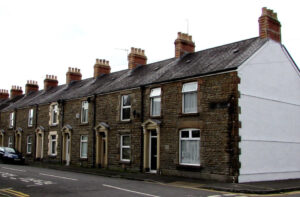
When it comes to older buildings in Swansea, a lot at 1850’s to 1900’s stone cottages, it’s estimated that over 35% of the residential properties are of this era – way before energy performance was a topic!
These buildings require special consideration, modern external render and internal plaster causes lots of damp issues, and External Wall Insulation, or Internal Wall Insulation needs careful consideration, or you’ll end up with rotten joists and a much bigger problem on your hands!
But anyway, that’s not the topic of this post, extensions are the focus today.
In the 70’s and 80’s a lot of these properties had grant funding from the local councils to build rear extensions, downstairs kitchen, upstairs bathroom.
The date of this is so important to an accurate EPC.
So many EPC assessors will date the extension in the early 1900’s, up to about 1930 as either a solid brick wall or a narrow cavity wall.
However, if dated correctly, can make a massive difference to the EPC, even bringing you into a C rating.
Let’s take a property, with everything else being equal, and the extension dated prior to 1975 – we have a figure of 67 points, a D rating.
If the extension can be dated with evidence of 1976 – 1982, that’s 69 points, a C.
83-95 = 70 points
96-2002 = 71 points
03 onwards = 72 points
So that date of 1976 makes a positive difference to landlords in the Swansea region trying to get an EPC C rating.
In terms of evidence, check the mortgage valuation report, chances are it’ll state on there late 70’s!
If you’d like advice on getting to an EPC C rating for your rental properties, just get in touch for a chat.